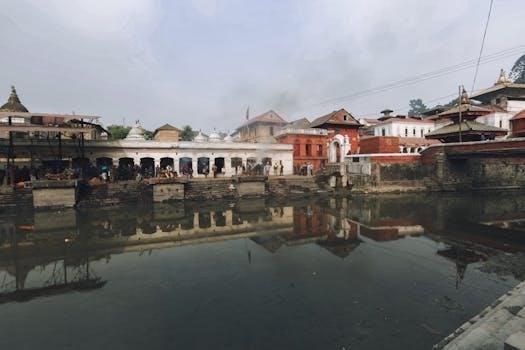Overview of “The Cremation of Sam McGee”
Robert Service’s “The Cremation of Sam McGee” is a narrative poem that unfolds a peculiar tale of friendship, death, and fulfilling a promise amidst the Klondike Gold Rush. The poem blends dark humor with the harsh realities of the Arctic.
“The Cremation of Sam McGee” tells the story of Sam McGee, a Tennessee native who ventures to the Klondike in search of gold but is ill-equipped for the brutal Arctic cold. He constantly laments the freezing temperatures, longing for the warmth of his Southern home and even declaring that he’d prefer hell over the relentless chill.
During their travels, Sam becomes increasingly weak and succumbs to the deadly cold. Before his demise, he extracts a promise from the narrator, his friend, to cremate his remains to avoid being buried in the icy ground. Driven by loyalty, the narrator honors this grim request, facing numerous challenges in the frozen wilderness.
He eventually finds a seemingly abandoned ship on the shores of Lake Lebarge, where he starts a fire in the ship’s furnace. Upon opening the furnace door, he’s met with a shocking sight⁚ Sam McGee, quite alive and surprisingly comfortable amidst the flames, claiming it’s the first time he’s been warm.

Key Characters⁚ Narrator and Sam McGee
In Robert Service’s “The Cremation of Sam McGee,” two central figures drive the narrative⁚ the unnamed narrator and Sam McGee himself. The narrator serves as the storyteller, recounting the bizarre events that unfold during their Klondike journey. He is portrayed as a loyal and dutiful companion, bound by his word to fulfill Sam’s unusual final request. His actions are motivated by a sense of obligation and friendship, highlighting his reliability in the face of extraordinary circumstances.
Sam McGee, on the other hand, is a man out of his element. Hailing from the warm climate of Tennessee, he is physically and psychologically unprepared for the Arctic’s harsh conditions. His constant complaints about the cold and his morbid fear of an icy grave reveal his vulnerability and desperation. Despite his suffering, Sam’s peculiar request and the unexpected outcome add a layer of dark humor to his character. He is the catalyst for the poem’s central conflict and its surprising resolution.

Themes in “The Cremation of Sam McGee”
“The Cremation of Sam McGee” explores themes of survival in harsh conditions, the strength of friendship and loyalty, and the human fear of death and the unknown, all set against the backdrop of the Klondike Gold Rush.
The Perils of the Klondike Gold Rush
“The Cremation of Sam McGee” vividly portrays the extreme and unforgiving environment of the Klondike Gold Rush. Driven by dreams of fortune, individuals like Sam McGee ventured into the Arctic, a landscape indifferent to human suffering. The poem underscores the brutal cold, a constant and deadly threat that permeates every aspect of life.
The relentless winter, isolation, and scarcity of resources created a pressure cooker of desperation and hardship. McGee’s constant struggle against the cold symbolizes the overwhelming challenges faced by prospectors. His longing for the warmth of Tennessee highlights the psychological toll of the Arctic’s harshness, pushing men to their physical and mental limits.
The Klondike was not merely a place for opportunity; it was a battleground against the elements, where survival was a daily struggle and death was an ever-present possibility. The poem serves as a stark reminder of the human cost associated with the pursuit of wealth and the dangers inherent in confronting nature’s most formidable forces.
The Meaning of Friendship and Loyalty
At its heart, “The Cremation of Sam McGee” explores the profound themes of friendship and unwavering loyalty in the face of extreme adversity. The narrator’s solemn vow to cremate Sam’s remains, despite the daunting challenges, exemplifies the depth of their bond. This promise becomes a moral imperative, driving the narrator to overcome seemingly insurmountable obstacles.
The poem underscores the importance of honoring one’s word, even when confronted with grotesque circumstances and personal discomfort. The narrator’s commitment transcends mere obligation; it reflects a genuine sense of compassion and respect for Sam’s final wish.
In the desolate and unforgiving landscape of the Klondike, human connection becomes a lifeline. The loyalty displayed between the narrator and Sam McGee highlights the enduring power of friendship to provide solace, purpose, and a sense of shared humanity amidst the dehumanizing conditions of the gold rush. It is a testament to the strength found in camaraderie.
The Fear of Death and the Afterlife
“The Cremation of Sam McGee” delves into the universal human anxieties surrounding death and what lies beyond. Sam’s explicit request for cremation stems not from a fear of death itself, but from a profound dread of the “icy grave.” This reveals a primal fear of the Arctic’s unforgiving cold, which symbolizes a permanent, desolate afterlife.
His desire to escape this frozen eternity suggests a longing for a warmer, more comforting final resting place, perhaps reminiscent of his Tennessee home. The act of cremation, therefore, becomes an attempt to control his fate in the afterlife, ensuring a release from the agonizing cold that plagued him in life.
The poem subtly touches on the human need to imbue death with meaning and dignity. By honoring Sam’s unusual request, the narrator provides him with a sense of agency and peace in his final moments, acknowledging the power of individual beliefs about death and the afterlife. It is a final act of kindness.

Symbolism in the Poem
“The Cremation of Sam McGee” is rich in symbolism. The cold represents death and the harsh environment. The fire symbolizes escape and warmth, while the corpse represents the burden of promises and friendship tested.
Cremation as an Escape from the Cold
Within the stark narrative of “The Cremation of Sam McGee,” cremation emerges as a potent symbol representing an escape from the relentless, bone-chilling cold of the Arctic. Sam McGee, a man haunted by the icy grip of the North, harbors an intense fear of a frozen grave. His plea to the narrator isn’t merely a request for disposal but a desperate yearning to transcend the pervasive cold that defines his existence.
Cremation, in this context, becomes an act of liberation, a fiery rebellion against the Arctic’s oppressive power. It signifies a transition from the physical realm, dominated by the cold, to a spiritual one, potentially offering warmth and peace. The flames consume the physical body, freeing Sam from the icy prison he so dreaded. This symbolic act underscores the poem’s exploration of mortality and the human desire to conquer even death’s chilling embrace. It’s a final, defiant act against the unforgiving landscape.
The Significance of the Corpse
In “The Cremation of Sam McGee,” the corpse of Sam McGee transcends its literal meaning, becoming a powerful symbol that embodies themes of loyalty, commitment, and the haunting presence of death. The narrator’s arduous journey carrying the frozen body across the Arctic landscape highlights the immense burden of keeping a promise, even in the face of extreme adversity.
The corpse serves as a constant reminder of mortality and the fragility of human life in the unforgiving Klondike. Its chilling presence underscores the harsh realities faced by those seeking fortune in the gold rush, where death was an ever-present companion. The narrator’s dedication to fulfilling Sam’s final wish, despite the growing difficulties, elevates the corpse to a symbol of unwavering friendship and the profound responsibility one assumes when making a solemn vow. It is a testament to human connection amidst desolation.
Robert Service’s Inspiration and Background
Robert Service, often called “the Bard of the Yukon,” drew heavily on his experiences in the Canadian Klondike to craft his iconic poem, “The Cremation of Sam McGee.” Having arrived in Whitehorse in 1904, Service immersed himself in the rugged landscapes and the vibrant stories of prospectors, adventurers, and those seeking fortune in the gold rush. His time in the Yukon provided him with a wealth of inspiration, shaping his unique poetic style and subject matter.
Service’s background as a bank clerk allowed him to observe the lives and tales of those passing through the region, which he masterfully wove into his works. “The Cremation of Sam McGee” is believed to be based on a peculiar tale he encountered during his time there, reflecting the harsh realities, the dark humor, and the strong bonds forged in the face of adversity that characterized life in the Klondike. His ability to capture the spirit of the era made him a beloved and enduring voice of the Yukon.

Literary Devices Used
Robert Service’s “The Cremation of Sam McGee” is a masterclass in the effective use of literary devices, contributing significantly to the poem’s enduring appeal and vivid imagery. Service employs a strong narrative voice, drawing the reader into the chilling tale from the outset. His use of ballad form, with its regular rhyme scheme and meter, creates a rhythmic flow that enhances the storytelling.
Imagery is paramount, with Service painting a stark picture of the Arctic landscape and the effects of the relentless cold. Hyperbole, such as Sam McGee’s extreme aversion to cold, adds to the poem’s darkly humorous tone. Alliteration and assonance contribute to the musicality of the verse, while vivid descriptions of the characters and setting immerse the reader in the Klondike experience. Through these devices, Service crafts a memorable and engaging narrative that resonates with readers long after they finish the poem.

No Responses